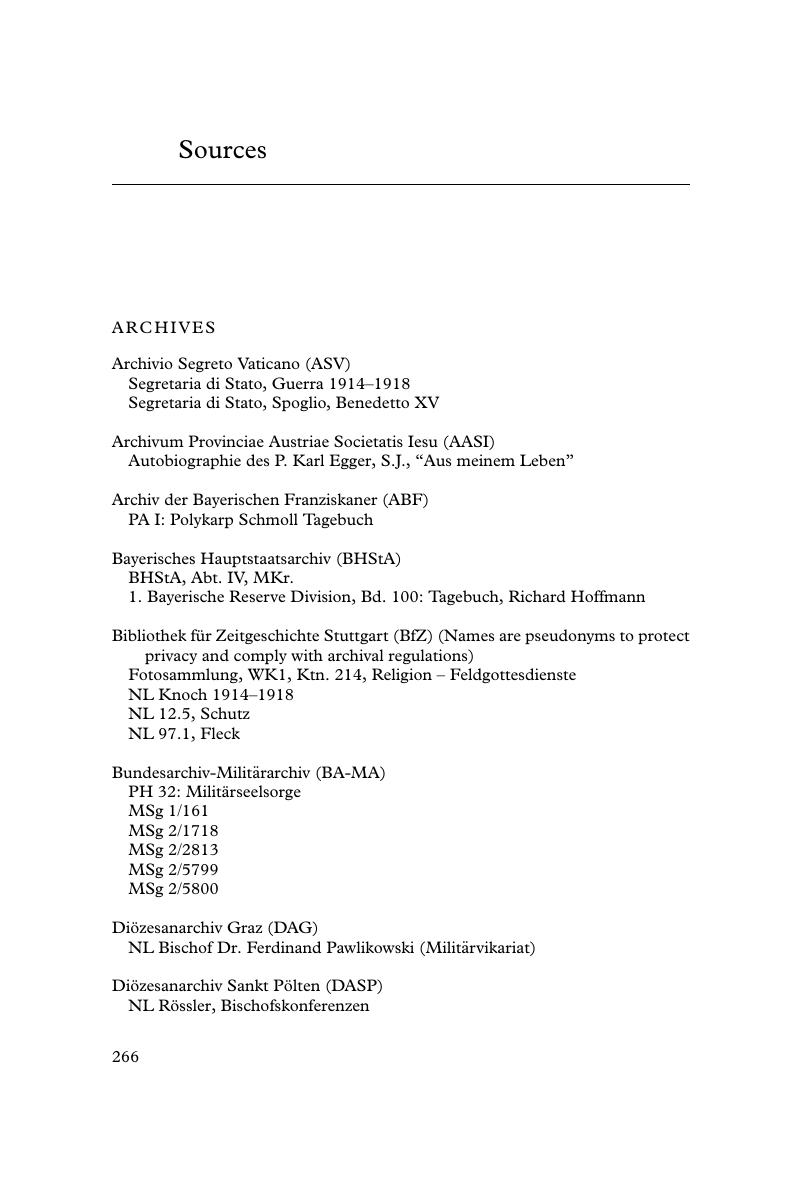Book contents
- Frontmatter
- Dedication
- Contents
- List of figures
- Acknowledgments
- Note on the text
- List of abbreviations
- Introduction
- 1 Catholicism on the eve of the Great War in Germany and Austria-Hungary
- 2 Theology and catastrophe
- 3 The limits of religious authority: military chaplaincy and the bounds of clericalism
- 4 Faith in the trenches: Catholic battlefield piety during the Great War
- 5 The unquiet homefront
- 6 A voice in the wilderness: the papacy
- 7 Memory, mourning, and the Catholic way of war
- Conclusion
- Sources
- Index
- References
Sources
Published online by Cambridge University Press: 05 May 2015
- Frontmatter
- Dedication
- Contents
- List of figures
- Acknowledgments
- Note on the text
- List of abbreviations
- Introduction
- 1 Catholicism on the eve of the Great War in Germany and Austria-Hungary
- 2 Theology and catastrophe
- 3 The limits of religious authority: military chaplaincy and the bounds of clericalism
- 4 Faith in the trenches: Catholic battlefield piety during the Great War
- 5 The unquiet homefront
- 6 A voice in the wilderness: the papacy
- 7 Memory, mourning, and the Catholic way of war
- Conclusion
- Sources
- Index
- References
Summary

- Type
- Chapter
- Information
- Catholicism and the Great WarReligion and Everyday Life in Germany and Austria-Hungary, 1914–1922, pp. 266 - 284Publisher: Cambridge University PressPrint publication year: 2015



